From Les Corts to Camp Nou (1922 – 1957)

News article on: History
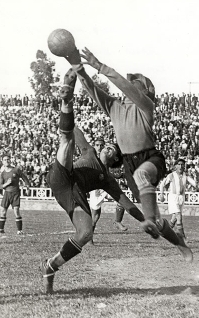
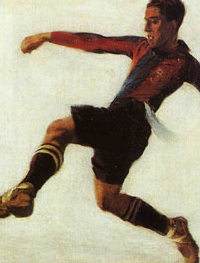
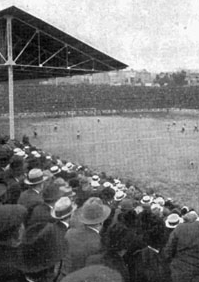
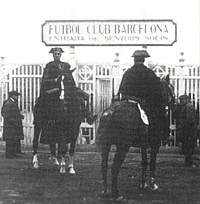
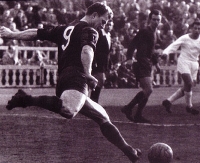
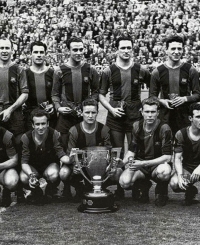
From Les Corts to Camp Nou (1922 – 1957)
The Les Corts stadium, inaugurated in 1922, set the stage for the growth of the Club throughout our golden era (1919-1929).
This wonderful period was also followed by the crisis decade of the 30s, which saw the stadium
closed by the fascist dictator Primo de Rivera and also used as a kind of military camp during the
civil war. However, the Les Corts stadium was still to live through yet another magnificent period,
that of the Barça of the Five Cups, which was the reason behind the big increase in member numbers
(from 20,000 in 1944 to 30,000 in 1950). Samitier in the 1920s and Kubala in the 1950s were among
many players who lit up a stadium that clearly marked the blaugrana history.
The start of the Glory Years - El Camp dels Corts
The decade between 1919 and 1929 is considered a golden age for the club, when the team boasted
players such as Samitier, Alcántara, Zamora, Sagi, Piera and Sancho, whose skill drew in the crowds
and the club began to take on its identification with Catalan nationalism during a particular
difficult period.
The 20th May 1922 saw the inauguration of the new Les Corts ground, which soon became known
as 'the cathedral of football'. It was a magnificent stadium with a capacity of 30,000, later
doubled to 60,000. On the celebration of the club's 25th anniversary in 1924, marked by the famous
poster drawn by Valencian artist Josep Segrelles, FC Barcelona had a total of 12.207 members and
the future looked bright for the club. Five years later, season 1928-29, Barca won the first of
their many Spanish League titles, a fitting climax to a period that had seen them conquer the
Catalan Championship in 1923-24, 1924-25, 1925-26, 1926-27 and 1927-28 and the Spanish Championship
in 1924-25, 1925-26 and 1927-28. This last victory came after two replays with Real Sociedad and a
heroic performance from Barca keeper Franz Platko, which was later celebrated in a poem by Rafael
Alberti.
Difficult times
In the midst of the glorious 20s, Barca suffered a precursor of the non-sporting conflicts which
were to mark the following decade. On 14th June 1925, during Primo de Rivera's dictatorship, the
crowd at a game in homage to the Orfeo Catalan jeered the Spanish national anthem and as a reprisal
the government closed the ground for six months, later reduced to three, and forced Gamper to give
up the presidency of the club. Five years later, on 30th July 1930, the club's founder died.
Although they continued to have players of the standing of Ventolrà, Raich or Escolà, the club now
entered a period of decline in a period when political conflict overshadowed sport throughout
society. Barca faced a crisis on three fronts: financial, social, with the number of members
dropping constantly, and sporting, where although the team won Catalan Championships in 1929-30,
1930-31, 1931-32, 1934-34, 1935-36 and 1937-38, success at Spanish level evaded them.
The effects of the Civil War
A month after the civil war began, Barça president Josep Suñol was murdered by Franco's soldiers
near to Guadalajara. Fortunately, the squad was on a tour of Mexico and USA, which although it
proved the financial saving of the club, also resulted in half the team seeking exile in Mexico and
France. On 16th March 1938 the fascists dropped a bomb on the club's social club and caused serious
damage. A few months later, Barcelona was under fascist occupation and as a symbol of Catalan
nationalism, the club, now down to just 3,486 members, was facing a number of serious problems. In
March 1940 a close collaborator with the Franco regime, Enric Piñeyro, marquès de la Mesa de Asta
was appointed President. At the same time, the name of the club was changed from its anglicized
original Futbol Club Barcelona, to the more Spanish Club de Fútbol Barcelona,(a change which was
finally reversed in 1973), and the four red bars of the Catalan flag on the coat of arms were
reduced to two, the original not being put back until 1949.
From near relegation to the Copa Latina (1949)
During the 40s, the club gradually recovered from a crisis which had seen them nearly relegated
in 1942, although they did win the Spanish Cup in the same season. During the next season, the
scandalous game against Madrid, saw the Barca players threatened by referee and police and Piñeyro,
a fascist supporter, but honestly disgusted at the treatment his team had received, resigned from
the presidency of the club. With the conquest of the Spanish Leagues of 1944-45, 1947-48 and
1948-49, as well as the Copa Llatina in 1949, the club finally seemed to have turned the corner and
put the problems of the previous few years behind them. Barca celebrated their 50th anniversary in
1949 boosted by member numbers of 24,893 and boasting a total of 21 Catalan Championships, 9 cups
and 4 Spanish League titles.
Kubala and the five cups
With the arrival of Ladislau Kubala in June 1950, it soon became clear that Barca were growing
too big for their Les Corts ground. Between 1951 and 1953, Barca won every title on offer -the
Spanish Leagues of 1951-52 and 1952-53, the Spanish Cup in 1951,52 and 53. During this Golden Age,
the 1951-52 season is especially remembered as the year of the Year of the Five Cups –League,
Cup, Copa Llatina, Eva Duarte and Martini Rossi. The fantastic forward line of Basora, César, Vila,
Kubala and Manchón was the precursor of the attack of the following season which inspired Joan
Manuel Serrat’s famous song - Basora, César, Kubala, Moreno and Manchón.
FC Barcelona History
More than a Club
Corporate information
Official sponsors
Copyright - FCBarcelona | Legal Terms | Buy tickets FC Barcelona | This is the FC Barcelona official website

